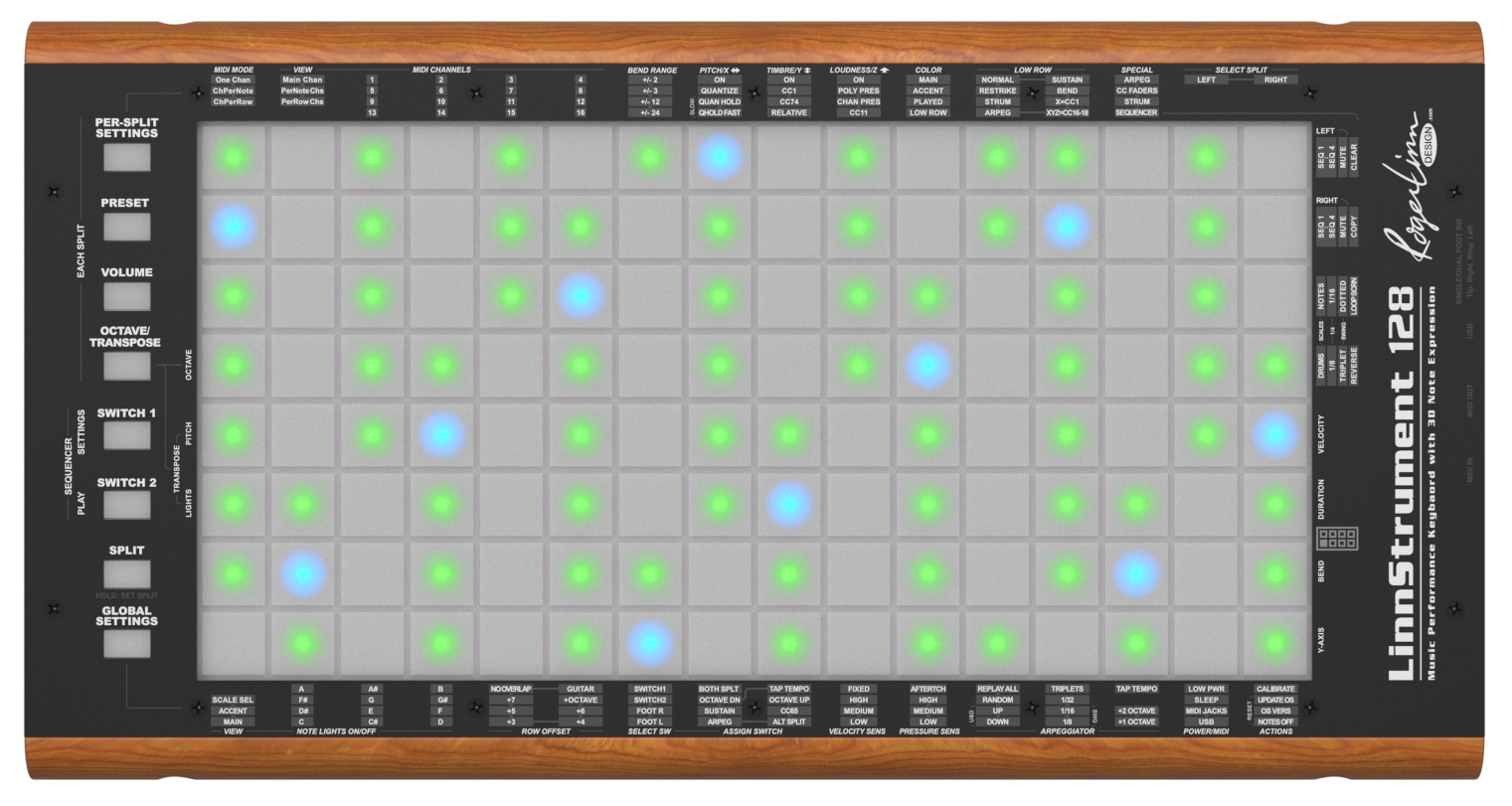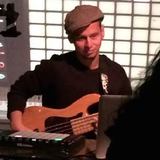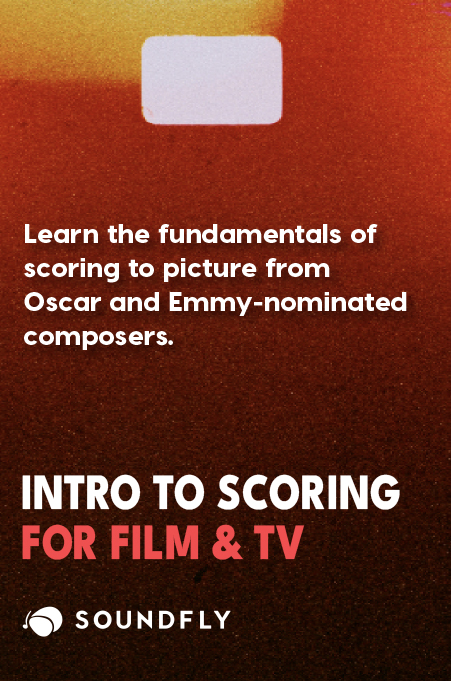+ Master the processes and techniques for programming professional-grade electronic drum beats in Ableton Live with Soundfly’s acclaimed online course.
A year ago, I had the pleasure of working with the great jazz pianist Rachel Z in my studio in Gowanus, Brooklyn. I showed her my live setup, which at the time looked like this, and complained that, as a bass player, I really didn’t like to perform electronic music while standing up behind a table.
For me, part of the beauty of playing the bass is having the instrument against my body and communicating directly with the other musicians onstage and the audience by using your eyes and body. Many acoustic instruments, or electric instruments like basses and guitars, have the added benefit of forcing you to stand in a way that opens up the chest and gives you a natural “power pose” on stage (watch this very famous TED talk to understand why power poses make you feel so good).
Hunching over a laptop, for me, has always felt like the opposite of a power pose. It closes the chest and forces you to look at a screen rather than use your eyes to communicate with the audience and those around you. For me, it deflates the physical high of playing onstage. Rachel suggested that I should take the Ableton Push and mount it on my body and play it like a bass. We chatted about it and I realized it was a very cool idea.
Soon afterwards, I spent several weeks in Costa Rica and Colombia on a tour, and in my spare time, I drew pictures of this Push-guitar. By the time I got back to New York, I knew exactly how I would put it together. First, I pulled a bass into pieces. Then, I went to Home Depot and bought $18 of supplies — some clamps and some velcro — and “Blinky” was born.
Blinky consists of an Ableton Push 2, a Korg nanoKONTROL 2, a Numark Orbit controller, and a Keith McMillen Instruments 12-Step MIDI Foot Control. I use the Ableton Push 2 for making the music — playing it like a keyboard. The nanoKONTROL 2 is used for effects — filters and such, mutes, changing sounds, and recording loops. The Orbit is used to filter the lead sounds and launch beats and clips, and the KMI pedal is also used to launch loops when my hands are busy. The KMI pedal allows me to play very low bass tones which change the voicings of chords that I’m playing on the Push.
In 1913, the Italian Futurist composer Luigi Russolo wrote in his brilliant manifesto, The Art of Noises, that in the future the limited sound palette of the orchestra would be superseded by musicians and composers creating music using an “infinite variety” of sounds. Over a century later, his vision has been realized and the laptop (the most important instrument of our time) is an implement of infinite sonic possibilities.
Yet, I also believe that the laptop is a terrible performance tool, and we are still in a period of experimentation with different interfaces for performers to use to harness a computer’s digital power. In 2016, I had a long conversation with Roger Linn, perhaps the most innovative instrument builder of the last 50 years, while working with him at NYU’s Clive Davis Institute and Berklee College of Music. Roger told me that we were currently in the “dark ages” of digital musical instruments, and that most laptop controllers were simply based on pushing buttons or piano keys (which actually are buttons as well).
He dreamt of instruments that would have the expressiveness of acoustic instruments — not simply attempts to forcibly apply acoustic instruments to electronic music, but instruments that would take new shapes and forms. Ableton’s Push is an attempt at this, as are Roli’s new instruments and Linn’s own Linnstrument.

I’m not suggesting that Blinky is the innovation that will get us out of these “dark ages.” Blinky is just my attempt to create a digital performance interface that works for me as a bass player. I’m hoping that I can take it further than just a janky and slightly gimmicky mash-up of some controllers and prove to myself that I can create a musical experience with it that’s fun for me, and hopefully for the audience as well.
I also believe that performers now have the power to create their own laptop instruments that suit their performances, and hopefully the instruments of the future will be as limitless as the sonic possibilities which we can now produce in the digital realm. My only hope for Blinky, beyond my own enjoyment, is that it might inspire musicians to create their own music-making interfaces that make sense for their own musical performances.
One last thing about Blinky: digital instruments are as much about software as they are about hardware. Of the hours I’ve spent learning this instrument, probably 75% has been spent on programming the laptop so that the hardware will respond in the way I want it to, and so that I can play it without looking at the laptop.
None of this would be possible without Ableton Live, of course, but also the scripting program ClyphX Pro. It is ClyphX that allows me to customize the controls on Blinky and turn it into a fantastic looping device. For more about it, check this vid I did last year explaining ClyphX Pro, or read some basics about it here. (Just a note: These were done before the release of ClyphX Pro when it was still a free program).
The above video was recorded live on June 14, 2019, at King Killer Studios in Gowanus, Brooklyn. It’s completely built from loops created on the fly, with the exception of an “Amen break beat” that I triggered at certain points in the song. The song is called “Prelude 4,” and it will be the first track of my upcoming record Red Hook Sun, which drops at the end of the summer. Red Hook Sun will have five songs composed on Blinky. The video features the Nicaraguan producer/musician Alejandro Vega on drums. It was recorded by Ian Elkind at King Killer Studios and shot and edited by Edgardo Parada of Shake Up Productions. Bob Power mastered the audio.
For more on Blinky and performing live with laptops, check out this interview I recently did with Max Wild, the director at 343 Labs.
Improve all aspects of your music making on Soundfly.
Subscribe to get unlimited access to all of our course content, an invitation to join our members-only Slack community forum, exclusive perks from partner brands, and massive discounts on personalized mentor sessions for guided learning. Learn what you want, whenever you want, with total freedom.
—
 Dan Freeman (CØm1x) is an artist/producer/Ableton Certified Trainer based in Brooklyn, NY. He directs NYC’s largest Ableton User Group and is on the faculty of New York University’s Clive Davis Institute for Recorded Music and The Juilliard School.
Dan Freeman (CØm1x) is an artist/producer/Ableton Certified Trainer based in Brooklyn, NY. He directs NYC’s largest Ableton User Group and is on the faculty of New York University’s Clive Davis Institute for Recorded Music and The Juilliard School.
Dan Freeman is also the host instructor of Soundfly’s Beat Making in Ableton Live course.



